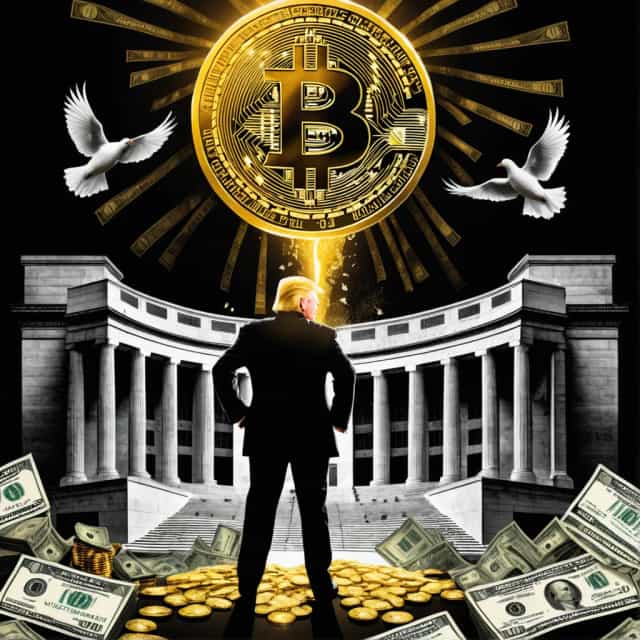
출처: Block Media
Bitcoin’s Role as a Gateway Asset Faces Challenges from Altcoins, DeFi, and Meme Coins
The traditional narrative of Bitcoin (BTC) as the primary entry point into the world of digital assets is undergoing a noticeable shift. Recent trends reveal that only about half of new investors begin their cryptocurrency journey with Bitcoin, signaling the growing prominence of altcoins, decentralized finance (DeFi), and meme coins. This evolving dynamic reflects the maturation and diversification of the cryptocurrency ecosystem.
Bitcoin’s Diminishing Dominance as the Entry Point for New Investors
According to findings from a CoinGecko survey released on October 27, only 55% of new investors reported holding Bitcoin as their first cryptocurrency. Meanwhile, 37% entered the market directly through altcoins, and 10% disclosed that they had never purchased Bitcoin at all. The data underscores a significant decentralization in the pathways through which individuals enter the digital asset space.
Such a shift challenges Bitcoin’s long-standing position as the symbolic gateway to cryptocurrency adoption. As the market diversifies with an increasing array of investment options and use cases, new investors are finding alternative routes into the ecosystem.
Altcoins and Community-Led Projects: Catalysts for Change
The rising appeal of alternative cryptocurrencies, often referred to as altcoins, has contributed significantly to this trend. Factors such as lower entry prices, vibrant community engagement, and unique project innovation have made altcoins particularly appealing to many new investors.
For instance, Solana (SOL) and Ethereum (ETH) are gaining traction due to their robust ecosystems and consistent performance. Investors are increasingly seeking opportunities in projects that promise not only returns but also active community involvement and advanced functionality. This diversification is redefining the traditional investor view of Bitcoin as the go-to starting point.
Another important factor is the perception that Bitcoin might have already reached its peak growth phase—a sentiment shared by those who see its previous price surges as potentially missed opportunities. In contrast, altcoins often represent new frontiers for innovation, with emerging technologies and applications, including smart contracts, staking mechanisms, and decentralized applications.
Hank Huang, an analyst at Chronos Research, highlighted the changing structure of the digital asset market, stating, “The market is evolving from a Bitcoin-centric framework to a much more diverse ecosystem where factors like innovation, culture, and community-driven projects are driving value.” Jonathan Miller, managing director of Kraken in Australia, further emphasized this point, noting the popularity of DeFi platforms and meme coins as alternative on-ramps for new participants. According to Miller, these trends indicate a maturing digital asset ecosystem with multiple points of access.
DeFi and Meme Coins: Expanding the On-Ramps to Crypto
The emergence of decentralized finance (DeFi) and the viral appeal of meme coins, such as Dogecoin (DOGE) and Shiba Inu (SHIB), have introduced new entry paths to potential investors. DeFi, in particular, has revolutionized the traditional financial landscape by offering decentralized lending, borrowing, and yield farming opportunities, making it an attractive option for tech-savvy users. Meanwhile, meme coins have gained substantial popularity due to their relatability, humor, and community-driven narratives. These assets not only diversify portfolio options but also make cryptocurrency more approachable to a broader audience.
By catering to various preferences and risk appetites, these segments have democratized access, providing multiple ways for people to learn about, interact with, and invest in digital assets without necessarily holding Bitcoin as their first asset.
Bitcoin’s Benchmark Role and Store-of-Value Status Remain Unshaken
Although Bitcoin’s symbolic role as the exclusive gateway into cryptocurrency appears to be waning, its status as a benchmark asset remains firmly rooted. Many experts argue that Bitcoin will continue to serve as the primary reference point in the digital asset market, especially during periods of economic uncertainty or declining confidence in fiat currencies.
Chien-En Rui, managing partner at Onigiri Capital, likened Bitcoin to gold, stating, “Similar to how gold has become a benchmark asset in the traditional financial markets, Bitcoin is on track to occupy a comparable position over the long term.” Historically, Bitcoin’s decentralized nature, limited supply, and recognition as a hedge against inflation have bolstered its perception as the ‘digital gold.’ These attributes solidify its role as a store of value and a critical part of the cryptocurrency ecosystem, even as its gateway status evolves.
The Broader Evolution of the Cryptocurrency Ecosystem
While Bitcoin may no longer dominate as the first point of contact for new investors, these developments highlight a broader maturation of the digital asset market. The diversification of entry points—whether through altcoins, DeFi, or meme coins—illustrates the growing complexity and inclusivity of the space. Each segment offers distinct opportunities for innovation, accessibility, and new use cases, enriching the ecosystem as a whole.
Ultimately, Bitcoin’s diminishing role as the exclusive entryway should not be viewed as a loss of relevance, but rather as a sign of the cryptocurrency industry's expanding horizons. Its strength as a benchmark and store of value remains integral to the market’s stability. Meanwhile, the rise of alternative pathways reflects the increasing sophistication, culture, and technological innovation driving the digital asset world forward.










